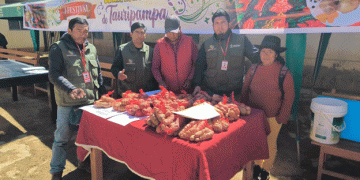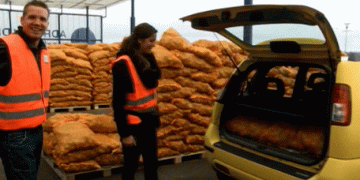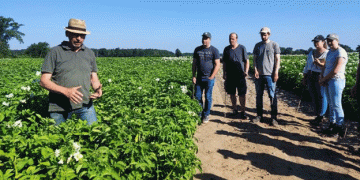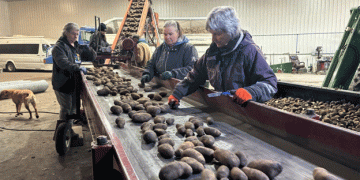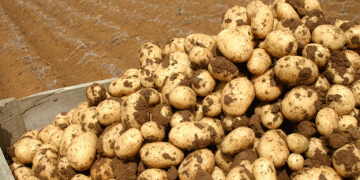The NVWA has established an infection with wart disease on two plots in the municipality of Stadskanaal (GR). Additional research in the area has not led to more finds.
The reason for research on these plots is the discovery of tubers with warts in a batch of starch potatoes that comes from these plots. While sampling the batch of potatoes in the survey for the brown and ring rot research commissioned by the NVWA, the NAK inspector found tubers with warts. During the NVWA investigation that followed, warts were found on the plots of origin. These were collected and examined in the laboratory, after which it was soon established that it was wart disease. The infected lot and the infected parcels belong to one grower. The infected area is almost 8 hectares and the distance between the two plots is approximately 3 kilometers. The NVWA is conducting further investigation into the cause.
‘Setback’
The find is a major setback, says Dirk Jan Beuling of the LTO Starch Potatoes working group. “It went well for a few years, but now again these finds.” Beuling calls the find a fluke. “It was actually a by-catch during the survey on brown and ring rot.” According to Beuling, the infections were done in a variety with a tolerance mark for wart disease. Despite this high number, the potatoes did become infected. “Apparently the conditions have been favorable for the development of wart disease: High temperatures, occasional showers, potatoes are grown on soil sensitive to waterlogging, but it is still too early to pinpoint an exact cause. ”
The message of these two infections is to stay alert, Beuling believes. “Keep a close eye on company hygiene, watch your choice of varieties. We have not drawn up the rules on this for nothing. ” According to Beuling, the entrepreneur where the finds were made works very neatly and in accordance with the protocol. “This is bad luck.”
Sieve soil
The NVWA has investigated the presence of wart disease in a radius of 5 kilometers around both infected plots. Plots and sieve soil were examined for the possible presence of wart-like structures. This has not led to more finds.
Wart disease is a plant disease caused by the fungus Synchytrium endobioticum. This fungus has quarantine status in the EU. There are different races of the fungus, of which race 1, 2, 6 and 18 occur in the Netherlands. Fysio 1 occurs in the Southeast Netherlands and the other physios in the Northeast Netherlands. The previous discovery of wart disease was in 2015 on a plot in the vicinity of Borger. After investigation it turned out that there was physio 18. The disease can be prevented by using clean machines and tools and not depositing contaminated soil on one’s own plots. It is still unclear which physio the new finds are about, research into this is in full swing.
Cultivation ban
The consequences of the find are mainly economic. Potatoes may no longer be grown on the infected plots for twenty years.


